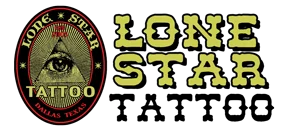Walk into any tattoo shop and you’ll likely see a price list that makes your wallet wince. Professional tattoos aren’t cheap, and there’s a reason for that. But here’s the thing that might surprise you: choosing the cheapest option often ends up costing significantly more in the long run. It’s a classic case of economics at work, where the initial sticker price tells only part of the story.
The tattoo industry operates on principles that mirror many other service sectors, but with one crucial difference – you’re literally wearing the results for life. This permanence changes everything about how we should evaluate cost versus value.
The True Cost of Professional Tattooing
When you pay $150-200 per hour for a quality tattoo artist, you’re not just paying for someone to push ink into your skin. You’re investing in years of training, expensive equipment, premium materials, and most importantly, expertise that can’t be replicated overnight.
Professional tattoo artists typically spend 2-4 years as apprentices, learning everything from proper sterilization procedures to advanced shading techniques. During this time, they’re often working for free or minimal pay while mastering their craft. Once they start charging clients, they need to recoup those years of investment.
The overhead costs are substantial too. A legitimate tattoo shop must maintain strict health department standards, which means professional-grade autoclaves, disposable needles, high-quality inks, and regular equipment maintenance. Insurance, licensing fees, and rent for properly zoned commercial space add up quickly. Many shops invest $50,000-100,000 just in initial setup costs.
Then there’s the time factor that clients often underestimate. A skilled artist spends hours designing an American classic tattoo and custom pieces, consulting with clients, and preparing for each session. That $200 hourly rate might seem steep until you realize it includes consultation time, design work, setup, the actual tattooing, and cleanup.
The Hidden Costs of Cheap Ink
The bargain tattoo market operates on entirely different economics. Cheap tattoo parlors cut costs wherever possible, but these savings come with significant hidden expenses that clients discover later.
Low-quality ink is one of the biggest cost-cutters, but it’s also where the most problems arise. Professional tattoo inks cost $15-30 per bottle, while knockoff versions sell for $3-5. The difference isn’t just price – it’s composition, safety, and longevity. Cheap inks often contain heavy metals, poor pigment quality, and inconsistent viscosity that affects how they heal and age.
Do cheap tattoos fade? Absolutely, and much faster than quality work. While professional tattoos maintain their vibrancy for decades, cheap tattoos can start showing significant fading within just a few years. The inferior pigments break down more quickly under UV exposure and normal skin cell turnover.
When cheap ink fades unevenly, changes color, or causes allergic reactions, you’re looking at expensive correction work. Touch-ups that shouldn’t be necessary become inevitable. Color corrections require additional sessions, often costing more than the original tattoo. In worst-case scenarios, complete removal becomes the only option.
Laser tattoo removal ranges from $200-1,000 per session, with most tattoos requiring 6-12 sessions. A $50 tattoo that needs removal suddenly becomes a $3,000-5,000 mistake. Even partial removal for cover-up work adds hundreds to the total cost.
Health Risks Equal Hidden Healthcare Costs
The most serious hidden costs come from health complications. Unlicensed or poorly trained tattoo artists may not follow proper sterilization procedures, leading to infections that require medical treatment. Hepatitis B, Hepatitis C, and other bloodborne pathogens remain real risks when proper protocols aren’t followed.
A simple skin infection might require a $150 doctor visit plus antibiotics. More serious complications can lead to emergency room visits, specialist consultations, and extended treatment periods. Some clients have faced medical bills exceeding $10,000 from tattoo-related infections.
Beyond immediate health risks, poor tattooing technique can cause permanent scarring, keloid formation, or nerve damage. These complications often require expensive corrective procedures or ongoing medical management.
The Skill Premium in Action
Economics teaches us about skill premiums – the extra compensation skilled workers receive for their expertise. In tattooing, this premium is particularly pronounced because mistakes are permanent and highly visible.
A master tattoo artist commands higher rates because they consistently deliver results that require minimal touch-ups, age well over time, and avoid the common pitfalls that plague amateur work. They understand skin types, know how different inks interact with various skin tones, and can execute complex designs with precision.
This expertise prevents the cascade of additional costs that often follow subpar work. When you pay a premium for skill, you’re essentially buying insurance against future expenses.
Consider the difference in line work quality. Professional artists create clean, consistent lines that heal properly and maintain their appearance. Poor line work often results in blowouts, uneven healing, or lines that appear shaky or inconsistent. Fixing these issues requires additional work, often more expensive than the original tattoo.
Market Dynamics and Consumer Behavior
The tattoo market has interesting economic dynamics that influence pricing across the industry. High-end artists often have waiting lists months long, allowing them to maintain premium pricing. Their reputation creates scarcity value – people will pay more and wait longer for their work.
Meanwhile, discount tattoo shops compete primarily on price, which creates a race to the bottom. To maintain profitability at low prices, they must cut costs somewhere. This usually means cheaper materials, less experienced artists, faster work, or corners cut on safety protocols.
The psychology of tattoo purchasing also plays a role. Many people view tattoos as discretionary purchases and focus heavily on upfront costs rather than long-term value. This shortsighted approach often leads to decision-making that prioritizes immediate savings over lifetime satisfaction.
Young adults, who make up a large portion of tattoo clients, may be particularly price-sensitive due to limited budgets. However, they’re also the demographic most likely to regret impulsive tattoo decisions and need expensive corrections later.
The True Economics of Touch-ups and Maintenance
Professional tattoo artists typically offer free touch-ups within the first few months, understanding that proper healing sometimes requires minor adjustments. This service is built into their pricing model and demonstrates confidence in their work quality.
Cheap tattoo parlors rarely offer similar guarantees. When problems arise, clients must pay for corrections or seek help elsewhere. This often means paying professional rates to fix amateur work – a scenario where you end up paying twice for the same piece of skin.
Even when cheap tattoos heal without immediate problems, they often require more frequent touch-ups over time. Poor-quality ink and inadequate technique create tattoos that fade faster and age poorly. What seemed like a bargain becomes a recurring expense.
Professional work, meanwhile, maintains its appearance for decades with minimal maintenance. The superior ink quality and application technique mean colors stay vibrant and lines remain crisp. This longevity represents exceptional value when calculated over the tattoo’s lifetime, often making expensive tattoos cost less per year of satisfaction.
Long-term Satisfaction and Opportunity Cost
There’s also an opportunity cost to consider. Once you have a poorly executed tattoo, that skin real estate is essentially unavailable for better work without expensive removal or cover-up procedures. You’ve not only spent money on subpar work but also foreclosed better options for that area.
The regret factor is significant too. Studies show that people are more likely to regret cheap tattoos than expensive ones, leading to removal procedures that cost many times the original tattoo price. The emotional cost of living with work you’re not proud of adds another dimension to the total expense.
Quality tattoos, by contrast, tend to appreciate in personal value over time. Clients remain satisfied with professional work and often return to the same artist for additional pieces. This builds a relationship that can lead to better pricing on future work and ensures consistency across multiple tattoos.
Making the Smart Economic Choice
Understanding these economics helps frame tattoo decisions properly. The question isn’t “What’s the cheapest tattoo I can get?” but rather “What’s the best value for a permanent addition to my body?”
This might mean saving longer for professional work, choosing a smaller design to fit your budget, or finding a reputable artist who offers payment plans. Many professional artists understand that quality work benefits everyone and are willing to work within reasonable budget constraints.
The smartest economic approach treats tattoos as long-term investments rather than impulse purchases. Just as you might research major purchases like cars or electronics, tattoos deserve similar consideration given their permanence.
Consider the total cost of ownership, not just the initial price. Factor in likely touch-up needs, the possibility of wanting changes or additions, and the importance of being satisfied with something you’ll see every day. When viewed through this lens, professional tattooing almost always provides better value than budget alternatives.
The tattoo industry’s economics clearly demonstrate that quality pays for itself over time. While professional tattoos require a larger upfront investment, they deliver better results, fewer complications, and higher long-term satisfaction. In a market where the product is permanent, the old saying rings especially true: you get what you pay for. The question is whether you want to pay once for quality or multiple times for fixing problems that could have been avoided from the start.


